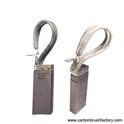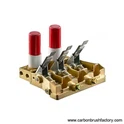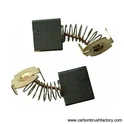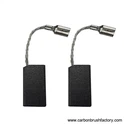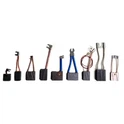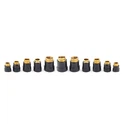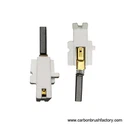The contact area between the carbon brush and the copper head plays a vital role in the operation of the motor. Theoretically, the larger the contact area, the higher the stability and efficiency of the motor during operation. Specifically, the contact area between the carbon brush and the copper head is related to the current transfer efficiency, the wear rate of the carbon brush, and the overall performance of the motor.
First, the larger contact area means that current can be transferred more evenly and efficiently through the carbon brush to the copper head, reducing energy loss and potential safety hazards due to poor contact or localized overheating. This helps to ensure that the motor receives a stable supply of current while it is operating, thus maintaining a stable speed and output power.
Secondly, the size of the contact area will also affect the wear rate of the carbon brush. Under the same operating conditions, carbon brushes with a larger contact area are subjected to more uniform pressure distribution and wear is relatively more uniform, which helps to extend the service life of carbon brushes. On the contrary, if the contact area is too small, the carbon brush will be subjected to excessive pressure locally, which will easily lead to aggravated wear and shorten its service life.
In addition, the contact area between the carbon brush and the copper head also affects the overall performance of the motor. If the contact area is insufficient, it may cause problems such as instability, jitter or heating during operation, affecting the normal operation and service life of the motor.
Therefore, when designing and maintaining the motor, it is necessary to ensure that the contact area between the carbon brush and the copper head is large enough to meet the needs of the normal operation of the motor. This can be achieved by selecting the right carbon brush material, optimizing the structural design of the carbon brush, and regularly inspecting and adjusting the installation position of the carbon brush. At the same time, when replacing the carbon brushes, attention should also be paid to keeping the contact area between the old and new carbon brushes and the copper head consistent to ensure the stable operation of the motor.

